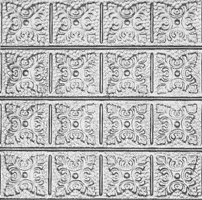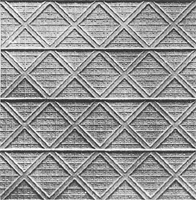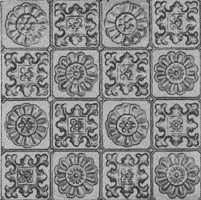The Root of the Problem
Truss uplift happens because the exposed truss lumber in an attic space absorbs moisture. This acceptance of moisture causes the lumber to swell. The swelling lumber lifts the horizontal bottom chord of the truss causing it to bow upwards in the middle of the truss.
Where does the moisture originate? Are we going into another ice age, with winters that drench us with above average precipitation and humidity? Does this humidity seep into the attic because of the new-fangled soffit and ridge venting? The answers to both questions are maybe. However, the source of the problem, I believe, has nothing to do with outside humidity. The outside weather has been fairly consistent for many years, at least as long as we have been using trusses.
I believe that truss uplift is directly related to the fact that we are building houses with tight windows and doors, superior vapor barrier systems and air infiltration barriers. The moisture that used to leak out around openings and through walls now has only one escape route - the attic.
What To Do?
I certainly am an advocate for building tight houses and saving energy. To do otherwise wastes precious resources for future generations. I feel the solution lies in correctly identifying the problem, and coming up with a workable solution. Fortunately in this case, the solution is easy.
Truss uplift will continue to plague houses. As we use lumber that is younger and less dimensionally stable, the uplift may even intensify! Minimizing interior ceiling and wall damage can be accomplished by simply allowing for the truss movement. In addition, maximizing flow-through air movement in attic spaces will allow moisture absorption into the exposed lumber to be minimized.
Simple Hardware & Blocks
You can purchase simple metal L-brackets specially designed for attaching interior walls to roof trusses. They cost less than 50 cents apiece! It usually takes about 15 seconds on average to install one of these simple clips.
The L-brackets have a short leg about 1.25 inches long that sits on top of the wall. This leg has two holes in it that accept nails. The other leg of the bracket is about 2.5 inches long. It has a slot that runs lengthwise up and down the leg. A nail is driven in the center of the slot. The bracket holds the wall in position while allowing the truss to move up and down freely.
Drywall Hanging 101
To solve interior ceiling problems, drywall hangers must also be educated and part of the team. We know the truss will flex. As such, we can't allow the ceiling drywall to be attached to a truss within 16 inches of any interior wall. What keeps the drywall in position and constantly contacting the top of the wall? You have two options.
If you have scrap 2x6 lumber, you can cut blocks that fit between the trusses and overhang the top plate of the interior 2x4 walls. These blocks are nailed securely to the top of the walls, NOT the trusses. As the trusses move up, the blocks retain and hold the drywall edge flush with the top of the wall plates.
If lumber is too precious on your jobsite, you can use very inexpensive metal clips designed to retain the drywall. These clips cost less than 15 cents apiece and attach with small 8 penny common nails.


